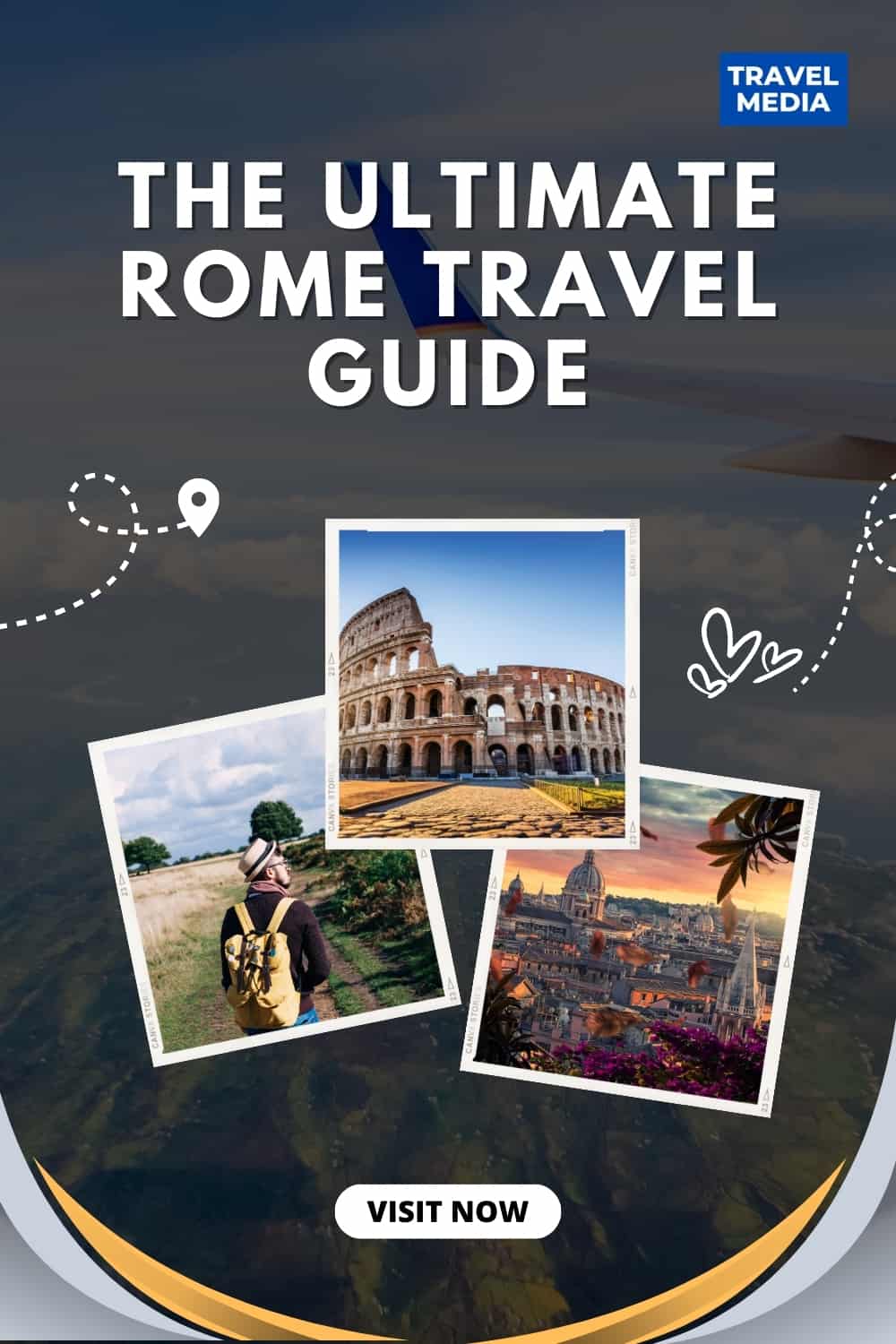Rome Travel Guide
Written by Joeri Van Overloop
Rome, the Eternal City, is a destination that should be on every traveler's bucket list. With its rich history and architectural wonders such as the Colosseum and the Pantheon, Rome has captured the hearts of visitors for centuries. But with so much to see and do in this bustling metropolis, it can be overwhelming to plan a trip. That's where our Rome travel guide comes in.
In this comprehensive guide, we'll provide you with everything you need to know before embarking on your Roman adventure. From must-see attractions and hidden gems to delectable cuisine and local customs, we've got you covered.
Why Go to Rome?
If you're planning a trip to Europe, Rome is a must-visit destination. Here are a few reasons why you should consider adding the Eternal City to your travel itinerary:
- Rich history and culture: Rome is one of the oldest cities in the world, and it has played a significant role in shaping Western civilization. The city is home to countless historic attractions, monuments, and museums that offer a glimpse into the past. From the Colosseum and the Pantheon to the Vatican Museums and the Sistine Chapel, there's no shortage of things to see and do in Rome.
- Beautiful architecture and sights: Rome is renowned for its stunning architecture and breathtaking sights. Whether you're wandering the streets of Trastevere or taking in the view from the top of the Spanish Steps, there's always something beautiful to see in Rome. The city is also home to some of the world's most iconic landmarks, including the Trevi Fountain, the Roman Forum, and St. Peter's Basilica.
- Delicious food and wine: Italian cuisine is famous around the world, and Rome is no exception. From classic pasta dishes like carbonara and cacio e pepe to local specialties like supplì and porchetta, there's no shortage of delicious food to try in Rome. And of course, no trip to Italy is complete without sampling some of the country's famous wines, such as Chianti, Barolo, and Prosecco.
- Friendly locals: Italians are known for their warm and welcoming hospitality, and Romans are no exception. Whether you're chatting with a shopkeeper or asking for directions, you're likely to encounter friendly and helpful locals who are happy to share their love of their city with visitors.
Best Time to Visit Rome?
When planning a trip to Rome, it's important to consider the best time to visit. You want to make sure you have good weather, avoid the crowds, and get the most out of your experience. Here are some tips to help you decide when to go:
Summer
Summer is the peak tourist season in Rome, with July and August being the hottest and busiest months. If you don't mind the heat and crowds, this can be a great time to visit. However, keep in mind that many locals go on vacation during this time, so some shops and restaurants may be closed.
May and October
May and October are considered the shoulder seasons in Rome. The weather is warm but not too hot, and the crowds are smaller than in the summer. This can be a great time to visit if you want to avoid the peak season but still have good weather.
Cool Weather
If you don't mind cooler weather, November to March can be a good time to visit Rome. The crowds are smaller, and the rates are lower. However, you will need to bring warm clothes as it can get chilly.

Weather in Rome
When planning your trip to Rome, it's important to consider the weather. Rome has a Mediterranean climate, which means it has hot, dry summers and mild, wet winters. Here's what you can expect throughout the year:
- Summer (June-August): Summers in Rome are hot and dry, with temperatures averaging around 86°F (30°C). It can get quite humid, especially in August. Be prepared for crowds, as this is peak tourist season.
- Fall (September-November): Autumn is a great time to visit Rome. The weather is mild, with temperatures ranging from 50-70°F (10-20°C). September and October are typically dry, while November can be rainy.
- Winter (December-February): Winters in Rome are mild, with temperatures averaging around 50°F (10°C). It can be rainy, so be sure to pack a waterproof jacket. While it's not as busy as the summer months, Christmas and New Year's can be quite crowded.
- Spring (March-May): Spring is another great time to visit Rome. Temperatures are mild, ranging from 50-70°F (10-20°C). It can be rainy, but the crowds are smaller than in the summer.
No matter what time of year you visit Rome, it's always a good idea to pack layers. Even in the summer, it can get cool at night. And if you're visiting in the winter, be sure to pack a warm coat.
How to Get to Rome?
If you're planning to travel to Rome, there are several ways to get there. Here are some options you can consider:
By Plane
Rome has two airports: Fiumicino (also known as Leonardo da Vinci) and Ciampino. Fiumicino is the main airport and is located about 30 km southwest of Rome. Ciampino is smaller and mainly used by low-cost airlines.
If you're flying to Fiumicino, you can take the Leonardo Express train to Roma Termini, the main train station in Rome. The train departs every 15 minutes and takes about 32 minutes to reach the station. The cost of a one-way ticket is €14.
Alternatively, you can take a shuttle bus or a taxi to get to the city center. A taxi ride from Fiumicino to Rome's city center will cost you around €48.
Best Flights To Rome
Quickly search the best flights from the widest selection of airlines flying to Rome. Regardless of what airline you go with, you can save money by comparing. Skyscanner is the best airline price comparison service specifically for Rome.
By Train
Rome is well connected to other cities in Italy and Europe by train. If you're coming from another city in Italy, you can take a high-speed train (Frecciarossa or Italo) to Roma Termini. The journey time from Florence to Rome, for example, is about 1 hour and 30 minutes.
If you're coming from another European city, you can take a train to Rome via Paris or Milan. The journey time from Paris to Rome, for example, is about 11 hours.
By Bus
If you're on a budget, taking a bus to Rome can be a good option. There are several bus companies that operate routes to Rome from other Italian and European cities. Some of the popular bus companies include Flixbus, Eurolines, and Megabus.
By Car
If you're planning to drive to Rome, keep in mind that the city center is a restricted traffic zone (ZTL). This means that you're not allowed to drive in the city center without a special permit. If you're staying in a hotel in the city center, you can ask the hotel to provide you with a permit.
How to Get Around Rome?
Rome is a sprawling city with a lot to see and do, so it's important to know how to get around efficiently. Here are some tips to help you navigate the city like a pro:
Walk
One of the best ways to explore Rome is on foot. The historic center is relatively compact, and walking allows you to take in the city's beautiful architecture and charming streets. Plus, you'll stumble upon hidden gems that you might miss if you were traveling by car or public transportation.
Public Transportation
Rome has an extensive public transportation system that includes buses, trams, and a metro. The metro is the fastest and most efficient way to get around the city, but it only has two lines, so it doesn't cover all areas of Rome. Buses and trams are slower but more comprehensive, and they can take you to areas that the metro doesn't reach.
You can purchase tickets for public transportation at tobacco shops, newsstands, and vending machines at metro stations. A single ticket costs €1.50 and is valid for 100 minutes from the time you validate it. You can also purchase a 24-hour ticket for €7 or a 48-hour ticket for €12.50.
Taxi
Taxis are readily available in Rome, but they can be expensive, especially during peak hours or if you're traveling a long distance. The initial fare is €3, and the cost per kilometer is €1.10. Make sure to only use licensed taxis, which are white with a "TAXI" sign on the roof and a meter inside. You can hail a taxi on the street or find one at a taxi stand.
Bike
Cycling in Rome is a great way to get around the city, especially as the Centro Storico is mostly car-free. Rome has many bike lanes, and it's also relatively easy to find bike rental shops, especially in areas like the Circus Maximus. However, keep in mind that Rome's streets can be busy and chaotic, so cycling may not be the best option for everyone.
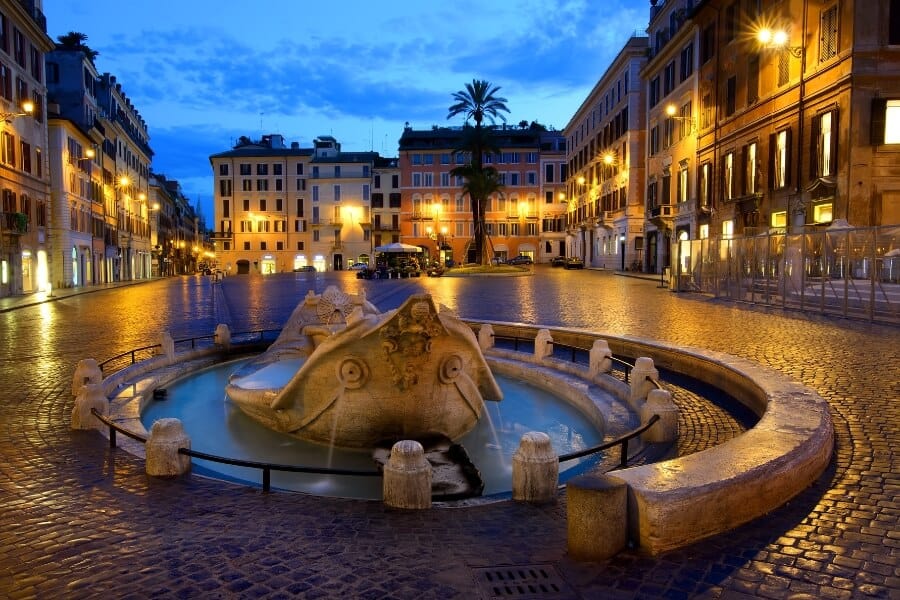
How Much Time Should I Spend in Rome?
If you're planning a trip to Rome, you might be wondering how much time you need to spend in the city to see all the major attractions and experience the best of what Rome has to offer. While the answer to this question depends on your personal interests and travel style, here are some general guidelines to help you plan your itinerary.
One Day in Rome
If you only have one day in Rome, you can still see some of the city's most famous landmarks, such as the Colosseum, the Roman Forum, and the Pantheon. However, keep in mind that you'll be rushing from one attraction to another and won't have much time to explore each one in depth. Consider taking a guided tour to make the most of your time and learn about the history and culture of Rome.
Two Days in Rome
With two days in Rome, you can see more of the city's highlights, such as the Vatican Museums, the Sistine Chapel, and St. Peter's Basilica. You'll also have more time to wander around the city's neighborhoods, try some authentic Italian food, and soak up the local atmosphere.
Three Days in Rome
Three days in Rome gives you enough time to see all the major Roman tourist attractions and also explore some of the lesser-known areas of the city. You can take a day trip from Rome to the nearby town of Tivoli to see the stunning Villa d'Este and Hadrian's Villa, or visit the Catacombs of Rome to learn about the city's early Christian history.
Four or More Days in Rome
If you have four or more days in Rome, you can really immerse yourself in the city's culture and history. You can take a cooking class, visit local markets, and explore the city's parks and gardens. You can also venture outside of Rome to see some of the nearby attractions, such as the ancient city of Pompeii, the beaches of the Amalfi Coast, or the medieval town of Assisi.
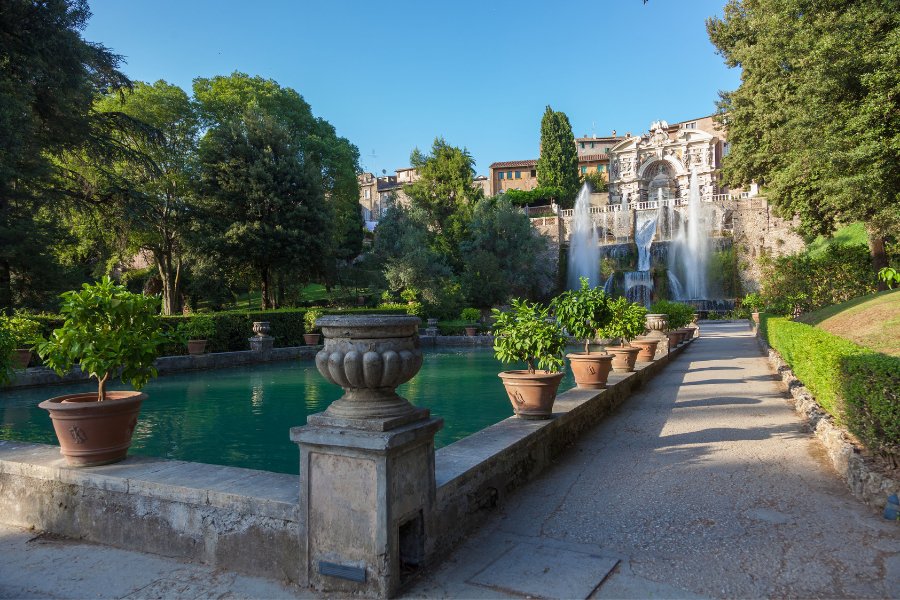
Tivoli
What Should I Do on My First Trip to Rome?
Rome is a city that can be overwhelming for first-time visitors. With so many things to see and do, it's important to prioritize your itinerary to make the most of your time. Here are some must-see attractions and activities for your first trip to Rome.
Visit the Colosseum and Roman Forum
The Colosseum is one of the most iconic landmarks in Rome, and it's a must-visit attraction for anyone interested in ancient history. You can purchase tickets in advance to avoid long lines. After visiting the Colosseum, head to the nearby Roman Forum to see the ruins of ancient temples, government buildings, and public spaces.
Explore the Vatican City
The Vatican City is a small, independent state located within Rome, and it's home to some of the world's most famous art and architecture. The Vatican Museums are a must-visit attraction, with highlights including the Sistine Chapel and the Gallery of Maps. Be sure to also visit St. Peter's Basilica, the largest church in the world, and climb to the top of the dome for some amazing views of the city.
Wander Through Trastevere
Trastevere is a charming neighborhood located across the Tiber River from the historic center of Rome. It's known for its narrow streets, colorful buildings, and lively nightlife. Spend an afternoon wandering through the neighborhood, stopping at local cafes and shops along the way.
Toss a Coin in the Trevi Fountain
The Trevi Fountain is one of Rome's most famous landmarks, and it's said that tossing a coin into the fountain will ensure your return to the city. The fountain can get crowded, so it's best to visit early in the morning or late at night.
Marvel at the Pantheon
The Pantheon is a stunning ancient temple that has been in continuous use for over 2,000 years. It's free to visit, and the interior is truly breathtaking. Be sure to look up at the dome, which is made of concrete and has a hole in the center that allows sunlight to stream in.
Visit the Churches
Rome is home to countless beautiful churches, each with its own unique history and architecture. Some of the most famous include the Basilica di Santa Maria Maggiore, the Basilica di San Giovanni in Laterano, and the Church of San Luigi dei Francesi, which is home to several stunning Caravaggio paintings.
Explore Villa Borghese
Villa Borghese is a large park located in the heart of Rome, and it's home to several museums and galleries. The Borghese Gallery is a popular attraction, with highlights including works by Bernini, Caravaggio, and Raphael.
Relax at Piazza Navona
Piazza Navona is a beautiful square located in the historic center of Rome. It's known for its stunning Baroque architecture, fountains, and street performers. Grab a gelato and take a seat on one of the benches to soak in the atmosphere.
Admire Ancient Sculptures
Rome is home to some of the world's most famous ancient sculptures, including the Laocoön and His Sons and the Capitoline Wolf. Many of these sculptures are housed in museums, but you can also see them in their original locations throughout the city.
By following this itinerary, you can experience the best of Rome on your first trip. Of course, there are many more things to see and do in the city, so don't be afraid to explore on your own and discover your own favorites.
What Are Some Hidden Gems to See in Rome?
When you think of Rome, you probably imagine the Colosseum, the Vatican, and the Trevi Fountain. But did you know that there are many hidden gems in Rome that most tourists never see? Here are some places you should consider adding to your itinerary:
Local Neighborhoods
While the historic center of Rome is certainly worth exploring, don't forget to venture out into some of the city's lesser-known neighborhoods. Testaccio, for example, is a working-class area that is home to some of the city's best food markets and restaurants. Monti, on the other hand, is a trendy neighborhood with a bohemian vibe and plenty of vintage shops and art galleries.
Contemporary Art
Rome is known for its ancient art and architecture, but the city also has a thriving contemporary art scene. Check out the MAXXI Museum, which is dedicated to contemporary art and architecture, or visit the MACRO Museum, which is housed in a former slaughterhouse and showcases modern art.
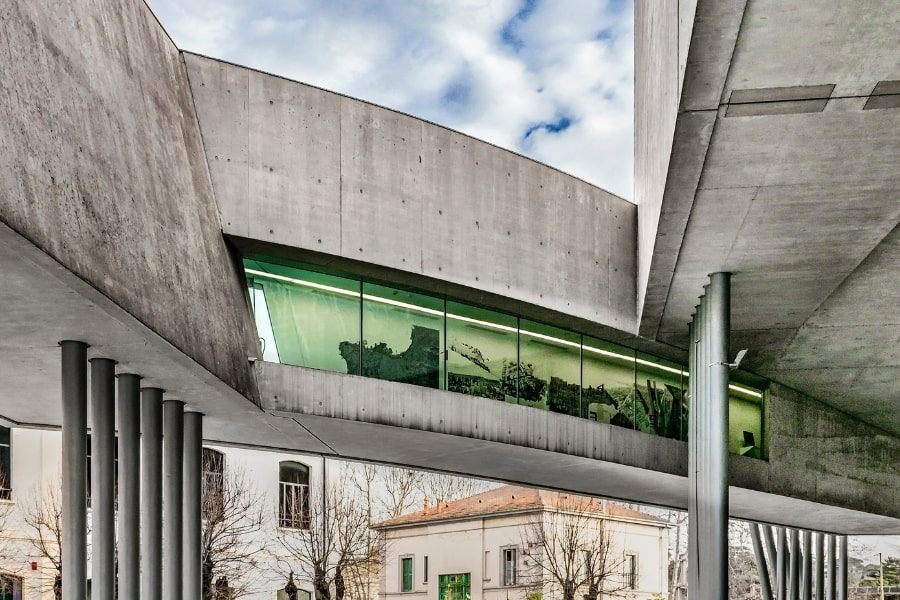
MAXXI Museum
Ancient Pharmacy
If you're interested in ancient medicine, be sure to visit Santa Maria della Scala, a former hospital that now houses a fascinating pharmacy museum. You'll see all sorts of strange and unusual remedies, including dried toads and powdered mummy.
Via Urbana and Via Vittorio Veneto
For a taste of old-world glamour, take a stroll down Via Urbana and Via Vittorio Veneto. These streets were once the center of Rome's high society, and they are still lined with elegant cafes, Roman restaurants, and shops.
Private Collections
Finally, if you're looking for something truly unique, consider visiting one of Rome's many private collections. The Doria Pamphilj Gallery, for example, is a stunning palace that is still owned by the Doria Pamphilj family and houses an impressive collection of art and antiques. The Corsini Gallery, meanwhile, is a private museum that is home to works by Caravaggio, Raphael, and other Italian masters.
What Neighborhood Should I Stay in When I Visit Rome?
When planning your trip to Rome, one of the most important decisions you'll make is where to stay. With so many neighborhoods to choose from, it can be overwhelming to decide which one is right for you. Here are some factors to consider when choosing the perfect neighborhood for your stay.
Proximity to City Center
If you want to be in the heart of the action, then staying in the city center is your best bet. The historic center, or Il Centro Storico, is a popular area for tourists as it is home to many of Rome's famous landmarks such as the Colosseum, Campo Fiori, and Piazza Navona. Staying in this area means you'll be within walking distance of many of Rome's top attractions.
Ostiense
If you're looking for a more modern and trendy neighborhood, then Ostiense might be the right choice for you. This area is known for its street art, hip Roman bars, and restaurants. It's also home to the Pyramid of Cestius, a lesser-known but still impressive ancient monument. Staying in Ostiense gives you a taste of modern Rome while still being close to the city center.
Roma Termini
If you're arriving in Rome by train, then staying near Roma Termini might be a convenient option for you. This area is home to Rome's main train station, which makes it easy to get around the city and to other parts of Italy. There are also plenty of hotels and accommodations in this area to choose from.
Choosing the Right Hotel
No matter which neighborhood you choose to stay in, it's important to choose the right hotel for your needs. Consider factors such as budget, amenities, and location when making your decision. Look for hotels with good reviews and a central location to make the most of your time in Rome.
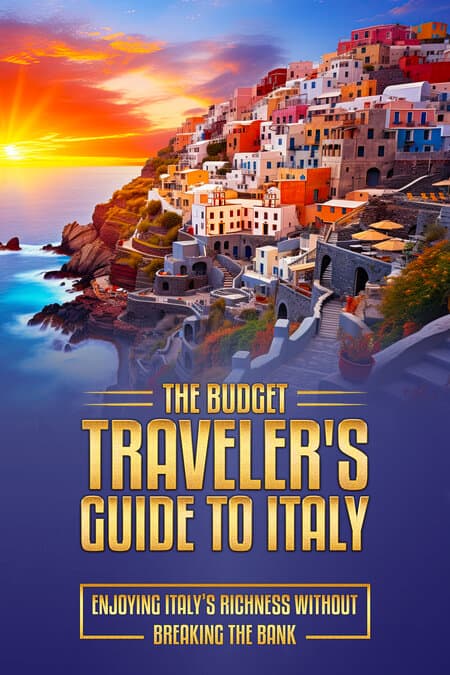
The Budget Traveler's Guide to Italy
Don't let expensive travel costs hold you back from exploring the beauty of Italy. With "The Budget Traveler's Guide to Italy," you'll discover insider tips and tricks to help you save money while experiencing the best Italy has to offer. Start planning your affordable Italian adventure today and make unforgettable memories without breaking the bank.
What Is a Good Budget for a Trip to Rome?
When planning a trip to Rome, one of the most important things to consider is your budget. Rome can be an expensive city to visit, but with some careful planning, you can enjoy all the city has to offer without breaking the bank.
Accommodation
Accommodation is likely to be one of the biggest expenses on your trip to Rome. However, there are plenty of budget-friendly options available, including Rome hostels, guesthouses, and budget hotels in Rome. You can find some great deals on discount travel websites or by searching for articles and guidebooks that offer tips on budget-friendly accommodation options.
Food and Drink
Rome is famous for its delicious food, but eating out can be expensive. To save money, consider visiting local markets where you can buy fresh produce and other goods at reasonable prices. If you do eat out, look for restaurants that offer set menus or lunchtime specials. You can also save money by drinking tap water instead of buying bottled water.
Transportation
Getting around Rome can be expensive, but there are some budget-friendly options available. You can purchase a Roma Pass, which gives you access to public transportation and discounts on museums and other attractions. Alternatively, you can walk or rent a bike to explore the city on your own.
Attractions
Rome is home to many world-famous attractions, including the Colosseum, the Vatican, and the Pantheon. To save money, look for discounted tickets or free admission days. You can also find maps and guidebooks that offer tips on how to see the sights without spending a lot of money.
Best Flights To Rome
Quickly search the best flights from the widest selection of airlines flying to Rome. Regardless of what airline you go with, you can save money by comparing. Skyscanner is the best airline price comparison service specifically for Rome.
How to Save Money in Rome?
1. Use Public Transportation
Using public transportation is a great way to save money in Rome. The city has an extensive public transportation system that includes buses, trams, and the metro. You can purchase a Roma Pass, which gives you unlimited access to public transportation and discounts on museums and attractions.
2. Visit Free Attractions
Rome has many free attractions that you can visit, such as the Pantheon, Trevi Fountain, and Spanish Steps. You can also visit the parks and gardens in Rome, such as Villa Borghese and the Appian Way Regional Park.
3. Eat Like a Local
Eating like a local can save you money in Rome. Look for small, family-run restaurants and trattorias that serve traditional Roman cuisine. You can also save money by eating a big lunch and a smaller dinner, as lunch menus are often cheaper than dinner menus.
4. Stay in Budget Accommodations
Rome has many budget accommodations, such as hostels and guesthouses, that can save you money on your trip. Look for accommodations that are located outside of the city center, as they are often cheaper than those in the center.
5. Use Discount Cards
There are many discount cards available in Rome that can save you money on museums and attractions. The Roma Pass, mentioned earlier, is one of them. You can also purchase the Omnia Card, which includes access to the Vatican Museums and other attractions.
How to Stay Safe in Rome?
Rome is a beautiful city with a rich history and culture, but like any big city, it has its share of safety concerns. Here are some tips to help you stay safe during your visit to Rome.
Obey Traffic and Pedestrian Rules
One of the most important things you can do to stay safe in Rome is to obey traffic and pedestrian rules. Many people flit across streets against the light or even without a light. Unfortunately, pedestrians and cyclists are often hit in Rome and across Italy because they are crossing when and where they shouldn't. This is a very preventable danger! Always cross at designated crosswalks, and wait for the signal to change before crossing the street.
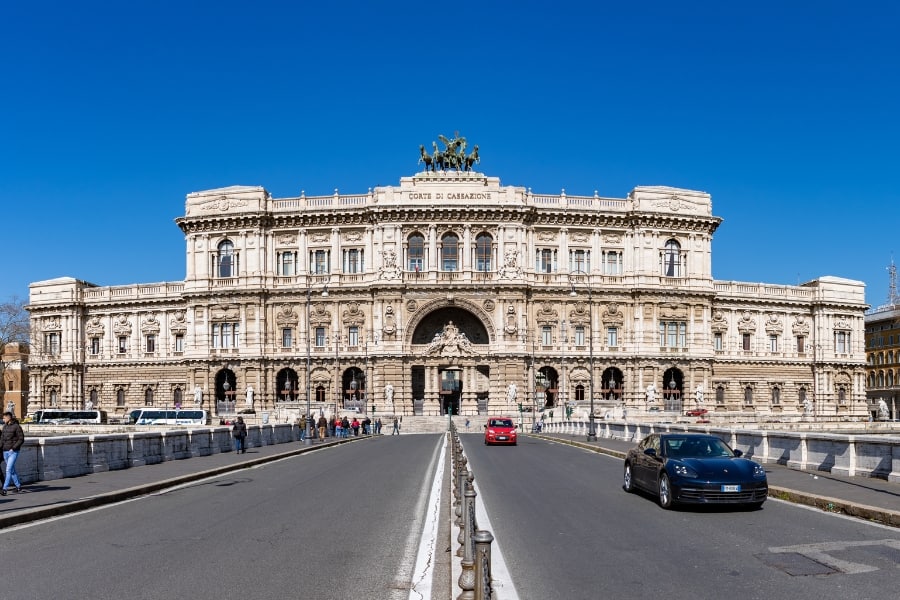
Be Aware of Your Surroundings
It's important to be aware of your surroundings at all times, especially in crowded areas such as tourist attractions, markets, and public transportation. Keep an eye on your belongings and be mindful of pickpockets. Thieves in Rome are stealthy, so always keep your bags zipped and held in front of you; wallets should ideally be tucked in your inner jacket pockets. Some thieves also snatch bags, so keep them close to your body and avoid carrying valuables if possible.
Avoid Certain Areas
While Rome is generally a safe city, there are some areas you should avoid, especially at night. The city's most crime-ridden neighborhoods include Tor Bella Monaca, Torpignattara, and San Basilio. These areas are known for their high crime rates, so it's best to avoid them altogether.
Use Licensed Taxis
If you need to take a taxi, make sure to use licensed taxis only. Unlicensed taxis are illegal and can be dangerous. Always ask for the price before getting in, and make sure the meter is running. If you feel uncomfortable, do not hesitate to get out and find another taxi.
Stay Alert on Public Transportation
Public transportation in Rome can be crowded, especially during rush hour. Keep your belongings close and be aware of your surroundings. Be especially cautious when using the metro or bus at night, and avoid empty carriages or buses.
What Are the Best Neighborhoods for Shopping in Rome?
When it comes to shopping in Rome, there are many neighborhoods to choose from. Each one has its unique charm and offers a different shopping experience. Here are some of the best neighborhoods for shopping in Rome:
Piazza di Spagna
Piazza di Spagna is the epicenter of Rome shopping. Here, you will find some of the world's best-known luxury brands, including Prada, Gucci, MaxMara, Ferragamo, Balenciaga, and Versace. The surrounding streets like Via dei Condotti, Via Frattina, Via Vittoria, and Via Borgognova are lined with high-end boutiques and designer stores.
Monti
If you're looking for a more local, boutique shopping experience, head to Monti. This neighborhood is known for its cobbled streets and vintage shops. Via del Boschetto and Via Urbana are two of the best streets for shopping in Monti. You'll find one-of-a-kind jewelry designers, artisanal leather goods, and unique clothing boutiques.
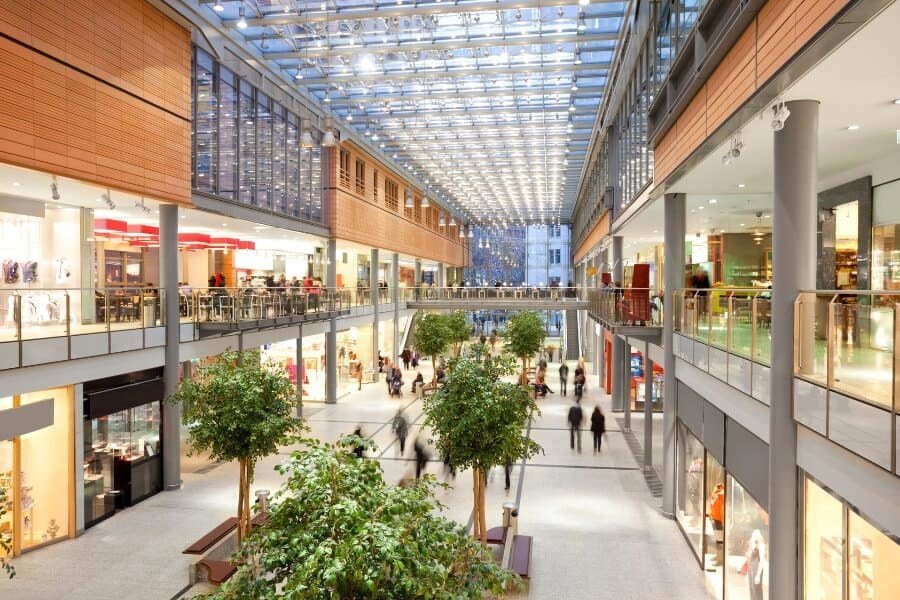
Trastevere
Trastevere is a charming neighborhood on the west bank of the Tiber River. It's known for its narrow streets, colorful buildings, and lively nightlife in Rome. While it's not as upscale as Piazza di Spagna, Trastevere has plenty of shops worth exploring. You'll find artisanal ceramics, handmade jewelry, and vintage clothing stores.
Campo de' Fiori
Campo de' Fiori is a bustling square in the heart of Rome. It's home to a daily open-air market where vendors sell fresh produce, flowers, and souvenirs. The surrounding streets are lined with shops selling everything from handmade pasta to leather goods. It's a great place to shop for foodie souvenirs.
Via del Corso
Via del Corso is one of Rome's main shopping streets. It runs from Piazza Venezia to Piazza del Popolo and is lined with shops of all kinds. You'll find everything from high-end designer stores to fast-fashion retailers. It's a great place to shop for clothing and accessories.
Best Flights To Rome
Quickly search the best flights from the widest selection of airlines flying to Rome. Regardless of what airline you go with, you can save money by comparing. Skyscanner is the best airline price comparison service specifically for Rome.
What Food is Rome Known For?
When you think of Rome, one of the first things that comes to mind is probably its delicious cuisine. Rome is known for its hearty and flavorful dishes that have been perfected over centuries. Here are some of the most famous foods that you have to try when visiting the Eternal City:
Pasta
Pasta is a staple of Italian cuisine, and Rome is no exception. One of the most famous pasta dishes in Rome is Cacio e Pepe, which is a simple yet delicious dish made with pecorino cheese and black pepper. Another classic is Carbonara, which features a creamy sauce made with eggs, cheese, and pancetta.
Pizza
While Naples is known as the birthplace of pizza, Rome has its own take on this classic dish. Roman-style pizza is typically thin and crispy, with a variety of toppings to choose from. One popular topping is prosciutto and arugula, which adds a salty and peppery flavor to the pizza.
Gelato
No trip to Rome would be complete without indulging in some gelato. This Italian-style ice cream is made with fresh, natural ingredients and comes in a variety of flavors. Some of the most popular gelato shops in Rome include Giolitti and Fatamorgana.
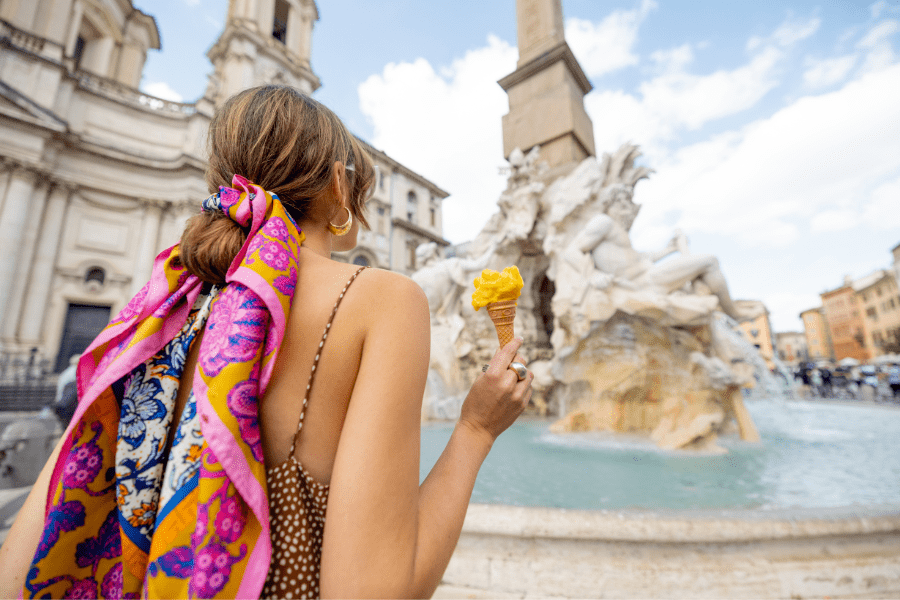
Cappuccino
Italians take their coffee seriously, and Rome is no exception. One of the most popular coffee drinks in Rome is the cappuccino, which is made with espresso and steamed milk. However, it's important to note that in Italy, cappuccinos are only consumed in the morning – ordering one in the afternoon or evening may earn you some strange looks!
Chicken
If you're looking for a hearty and flavorful dish, try the Roman-style chicken. This dish is made with chicken that has been marinated in a mixture of lemon, garlic, and rosemary, then roasted until tender and juicy.
Rome is a food lover's paradise, with a variety of dishes and flavors to suit every palate. Whether you're a fan of pasta, pizza, or gelato, you're sure to find something that will satisfy your cravings in this beautiful city.
FAQ
Q: Are Romans friendly to tourists?
A: Fortunately, the answer is yes! Romans are generally very welcoming and hospitable towards tourists. They understand that visitors come from all over the world to experience their culture and history, and they take pride in sharing it with others. In fact, hospitality is deeply ingrained in Italian culture – it's not uncommon for locals to strike up conversations with strangers or offer assistance without being prompted.
Q: What you need to know before going to Rome?
A: Firstly, be prepared for crowds. Rome is one of the most popular tourist destinations in Europe, so expect large crowds at popular attractions such as the Colosseum or Vatican City. To avoid long lines and waiting times, book your tickets in advance or consider visiting early in the morning or late in the evening when it's less busy.
Secondly, dress appropriately. While Rome is known for its fashion sense, it's important to dress modestly when visiting churches or religious sites out of respect for local customs.
Q: What is cool about Rome?
A: One of the coolest things about Rome is its impressive architecture, which dates back to over 2,000 years ago. The Colosseum, for instance, remains one of the most popular tourist attractions in Rome due to its sheer size and scale. This massive oval amphitheatre was built in AD 70-80 and could seat up to 50,000 spectators who came to watch gladiatorial contests, public spectacles and even mock sea battles among other events.
Another architectural marvel in Rome is St Peter's Basilica located within Vatican City; it is renowned as one of the holiest Catholic shrines worldwide and provides a stunning example of Renaissance architecture.
Q: What is the safest area in Rome for tourists?
A: One of the safest areas in Rome for tourists is undoubtedly the neighborhood around Vatican City. This area is heavily patrolled by police and security personnel due to its religious significance and high tourist traffic. In addition, many of the hotels and restaurants in this area cater specifically to tourists and take extra steps to ensure their guests' safety.
Another safe area for travelers is the historic center of Rome. This area includes popular landmarks such as the Colosseum, Pantheon, and Trevi Fountain.
Q: What makes Rome so great?
A: One reason that Rome stands out is its rich historical legacy. The city was founded 2,700 years ago and boasts an incredible array of ancient monuments and ruins that are still standing today. From the Colosseum to the Pantheon, these landmarks serve as a testament to Rome's grandeur during its peak as an empire.
Another factor that makes Rome so great is its vibrant food culture. Italian cuisine is renowned for its delicious flavors and fresh ingredients, and Rome provides some of the best examples on offer.
Q: Is Rome bad for pickpockets?
A: While it's true that Rome has a higher incidence of pick pocketing than other European cities, the issue isn't as bad as some may think. In comparison to other major cities in Italy, such as Naples and Palermo, Rome actually has lower rates of petty theft.
However, that doesn't mean you shouldn't take precautions when visiting Rome. Pickpockets tend to target tourists in popular areas such as the Colosseum and Trevi Fountain. They often work in groups and use distraction techniques like asking for directions or spilling food or drink on their victims. It's essential to keep your belongings close by and avoid carrying valuables in easily accessible pockets or bags.
Recommended Hotels In Rome
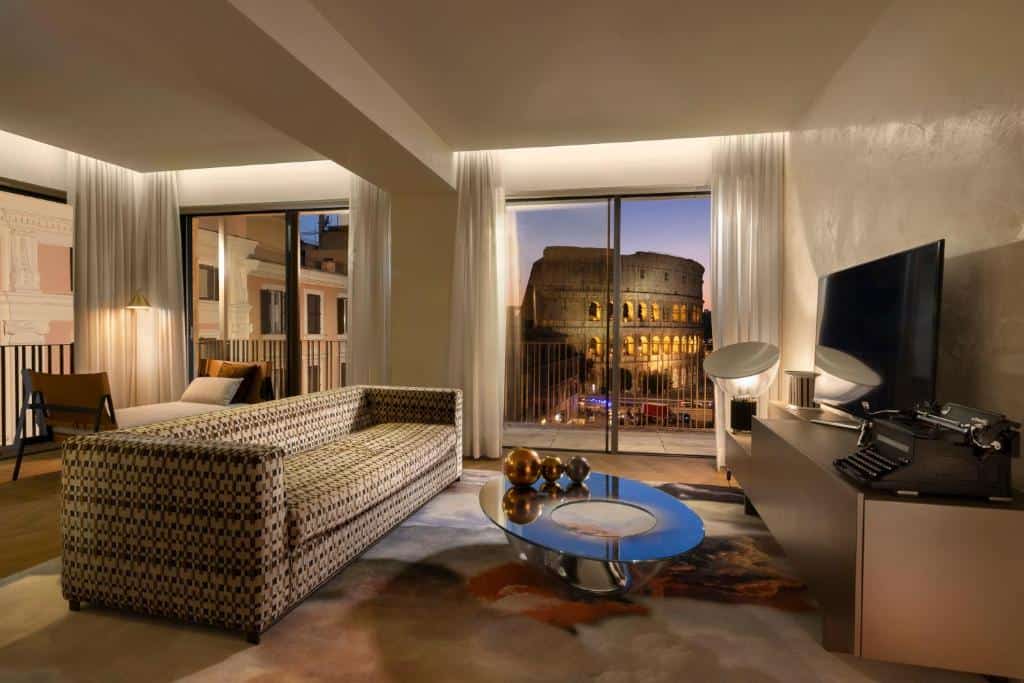
Hotel Palazzo Manfredi
Admire an outstanding view of the Coliseum over breakfast at the rooftop terrace at Hotel Palazzo Manfredi. Rooms here are spacious and offer free Wi-Fi and Sky TV.

J.K. Place Roma
Offering stylish rooms with free WiFi, J.K. Place Roma is located in the heart of Rome with the Spanish Steps and the Pantheon each a 10-minute walkaway.
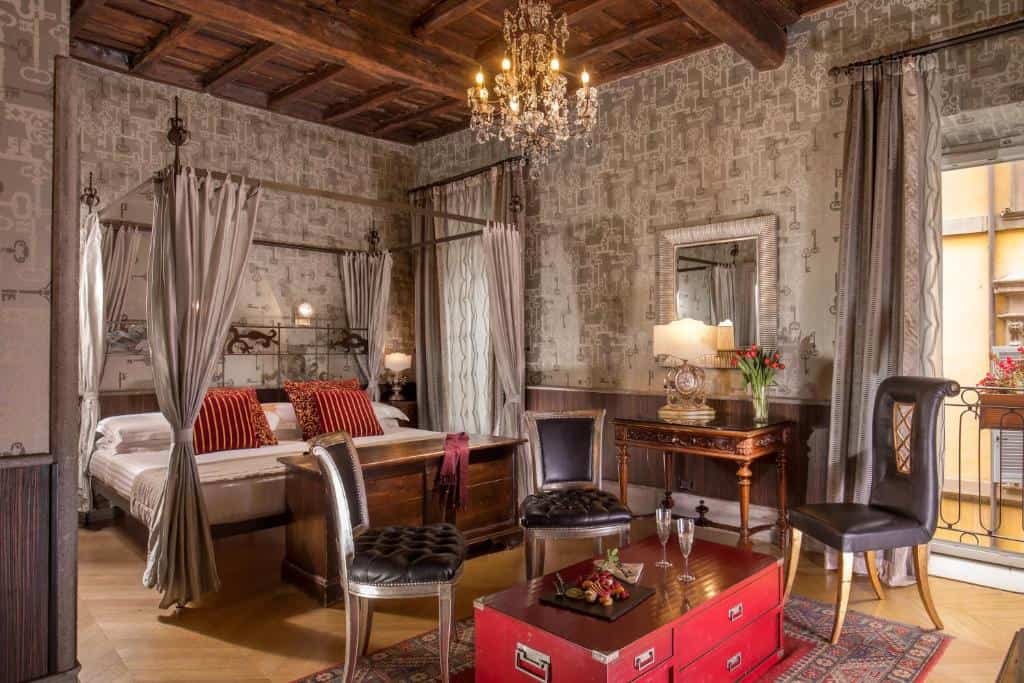
The Inn At The Roman Forum
Located in the heart of ancient Rome, The Inn at the Roman Forum is within walking distance of the Coliseum and Roman Forum, and actually houses ruins inside the property.
PLAN YOUR TRIP TO ROME
Book Your Hotel In Rome
You can book your hotel in Rome with Booking.com as they have the biggest inventory and best deals. If you want to stay somewhere other than a hotel, they also return the cheapest rates for accommodations like hostels, guesthouses and apartments.
Book Your Flight To Rome
Use Skyscanner to find cheap flights to Rome. They are my favorite search engine because they search websites and airlines around the globe so you always know you get the best rates.
Need a Rental Car In Rome?
Here is a budget-friendly car rental resource. No matter where you’re traveling, you’ll be able to find the cheapest car rentals in Rome here.
Looking for an Airport Transfer Service In Rome?
If you are looking for a convenient and affordable option to get to and from the airport in Rome, here you will find all the answers to book your next airport transfer in Rome.
Don’t Forget Your Travel Insurance
Travel insurance will protect you against illnesses, an injury, luggage theft, and even trip cancellations. It’s a comprehensive protection in case anything goes wrong during your trip. I never travel to Rome without it as I’ve had to use it several times in the past. My favorite travel insurance companies that offer the best service and value are:
Looking for the Best Travel Companies to Save Money With?
Check out my resource page for the best companies to use when you visit Rome. I list all the ones I use to save money when I’m taking a trip. They will save you money when you travel too.
Want More Information on Italy:
Be sure to visit our Italy Travel Guide for even more travel tips.

